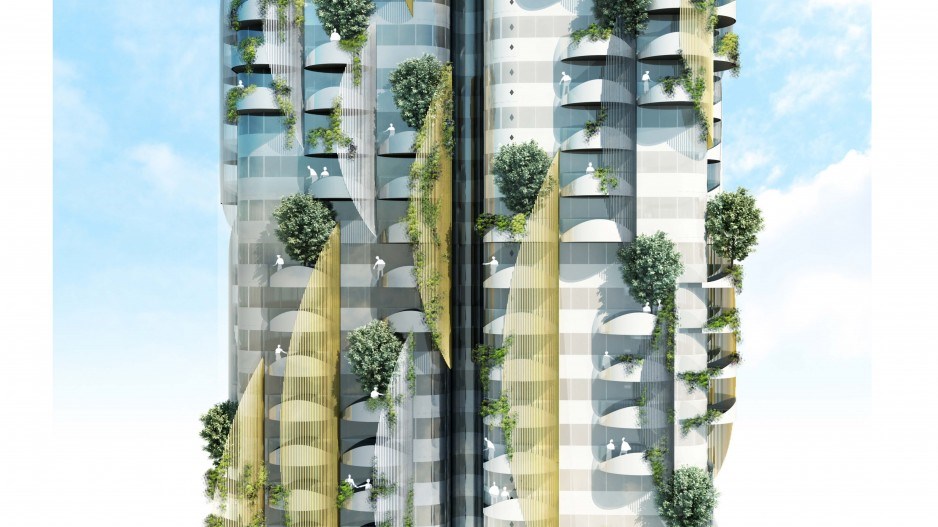Voting by more than 800 members of the Squamish Nation on December 10 came out 87% in favour of a massive, 6,000-home development project in Kitsilano projected to generate up to $20 billion in revenue over the next 120 years.
“We feel that this is a landmark decision, and huge landslide victory for our people who have wanted to see the Squamish Nation benefit from all the development that happens within our territory,” said Khelsilem, speaking December 11 on behalf of Squamish council at press conference announcing the referendum results. “Our members want to see investments in our communities.”
Revenues will be shared equally with Westbank Corp., which will partner with the Squamish to build 11 towers at Sen̓áḵw, a 12-acre parcel at the south end of the Burrard Bridge that Ottawa returned to the Squamish in 2000. In exchange for a long-term lease of the property, Westbank will guarantee the loan required for the development and contribute the equity required. The project will not require a financial investment by the Squamish other than the land.
“The Squamish Nation is providing land, but 100% of the loan guarantee is being provided by Westbank, so there is no requirement for the Squamish Nation to dip into any of our own equity or money on this,” Khelsilem said. “But not only that, we’re not required as a 50-50 partner to come up with $1.5 billion on the financing. Our partner would be required to come up with 100%.”
Designed as an economic development project to generate long-term revenue for the Squamish Nation, up to 90% of the project will be rentals, with condos accounting for 10% to 30% of the units. The majority of the project will be market-oriented, with just 150 to 200 rental units currently allocated for Squamish members. However, Squamish who wish to purchase strata units will receive preferential pricing.
The exact mix of units and timing for the condo portion is subject to the final agreements, which the referendum results allow to proceed.
“Now that we have this clear indication to move forward on the lease and the business partnership, we can start finalizing those kinds of details, then move towards very specific agreements with the city around the kinds of infrastructure,” Khelsilem said.
While the Squamish Nation is the local government authority overseeing the project and will collect property taxes from residents, it must contract for the provision of services.
A key element of the project is the lease agreement, which will run 120 years – enough time, says Toby Baker, senior operating officer for the Squamish Nation and CEO of Nch’kay Development Corp., to accommodate delays and shifting market conditions.
“We wanted to provide enough contingency at the front-end of the lease so that if we run into market conditions that aren’t favourable and we have to delay a phase it allows us 10 years to construct,” he explained.
This will result in a 110-year lease for rental units and a 99-year prepaid lease for the condo units, which will revert to rental units at the end of the period.
“We’re going to roll those strata condos back into the rental pool,” he said. “Those leasehold assets will return to the nation in 99 years and be added for the next 10 years of the rental pool.”
The mix of units will be determined in partnership with Westbank, guided by the priorities established by Squamish Nation members. Despite the reputation of Westbank for high-design and upper-end units, Khelsilem said the focus is on rental and meeting the social needs of the Squamish community.
“There are opportunities to include other types of units at reduced rates or subsidized rates. A lot of that’s going to depend on how much the nation wants to include in the project,” he said, noting that these will likely be undertaken with the assistance of financing programs from BC Housing and Canada Mortgage and Housing Corp.
Strata units will allow the project to secure profits on an as-needed basis, however. All going well, the first of the project’s five phases could break ground in 2021.
“Our current timeline, working with the developer and working with the city, we would like to see construction starting in the next 16 to 18 months,” Khelsilem said.




